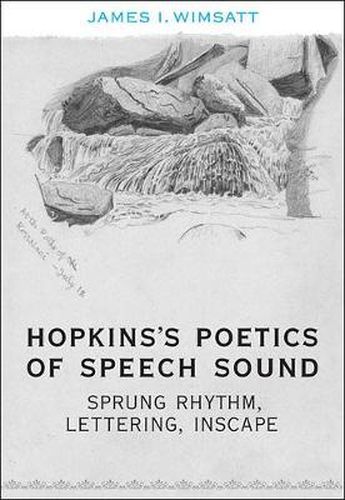Readings Newsletter
Become a Readings Member to make your shopping experience even easier.
Sign in or sign up for free!
You’re not far away from qualifying for FREE standard shipping within Australia
You’ve qualified for FREE standard shipping within Australia
The cart is loading…






Although virtually unknown in his lifetime, Gerard Manley Hopkins (1844-1889) is counted today among the great nineteenth-century poets. His poetry was collected and published posthumously by his friend Robert Bridges in 1917, and subsequently Hopkins’s reputation flowered, though more as a modern writer than as Victorian, and very little as a poetic theorist. Yet the body of Hopkins’s critical writing reveals sharp insight into the subject of poetics, and presents an innovative theory that locates primary poetic meaning in ‘figures of speech sound.’
These ‘figures of speech sound’ provide the focus for James I. Wimsatt’s erudite and original study. Drawing from Hopkins’s diaries, letters, student essays, and correspondence with poet-friends, Wimsatt illuminates Hopkins’s theory that the sound of poetic language carries an emotional, not merely logical and grammatical, meaning. Wimsatt concentrates his study on Hopkins’s writings about ‘sprung rhythm,’ ‘lettering,’ and ‘inscape,’ - his coinages - and makes abundant reference to Hopkins’s verse, showing how it exemplifies his language theory. A well-researched and highly detailed book, Hopkins’s Poetics of Speech Sound asserts major significance for a relatively neglected aspect of this important poet’s writings.
$9.00 standard shipping within Australia
FREE standard shipping within Australia for orders over $100.00
Express & International shipping calculated at checkout
Although virtually unknown in his lifetime, Gerard Manley Hopkins (1844-1889) is counted today among the great nineteenth-century poets. His poetry was collected and published posthumously by his friend Robert Bridges in 1917, and subsequently Hopkins’s reputation flowered, though more as a modern writer than as Victorian, and very little as a poetic theorist. Yet the body of Hopkins’s critical writing reveals sharp insight into the subject of poetics, and presents an innovative theory that locates primary poetic meaning in ‘figures of speech sound.’
These ‘figures of speech sound’ provide the focus for James I. Wimsatt’s erudite and original study. Drawing from Hopkins’s diaries, letters, student essays, and correspondence with poet-friends, Wimsatt illuminates Hopkins’s theory that the sound of poetic language carries an emotional, not merely logical and grammatical, meaning. Wimsatt concentrates his study on Hopkins’s writings about ‘sprung rhythm,’ ‘lettering,’ and ‘inscape,’ - his coinages - and makes abundant reference to Hopkins’s verse, showing how it exemplifies his language theory. A well-researched and highly detailed book, Hopkins’s Poetics of Speech Sound asserts major significance for a relatively neglected aspect of this important poet’s writings.